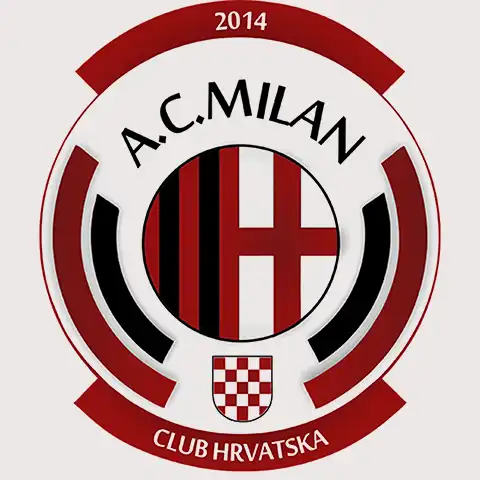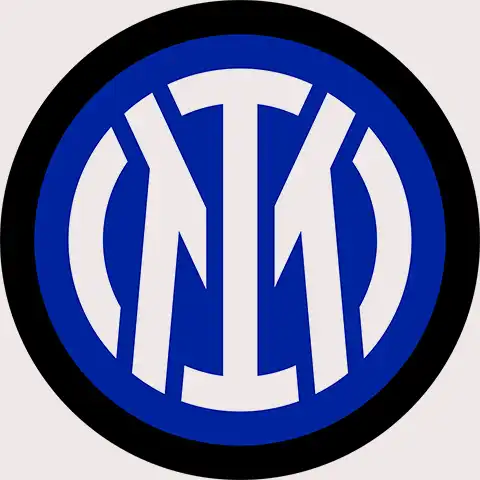Introducing Milan
A sophisticated northern Italian city with a distinct culture and awesome food
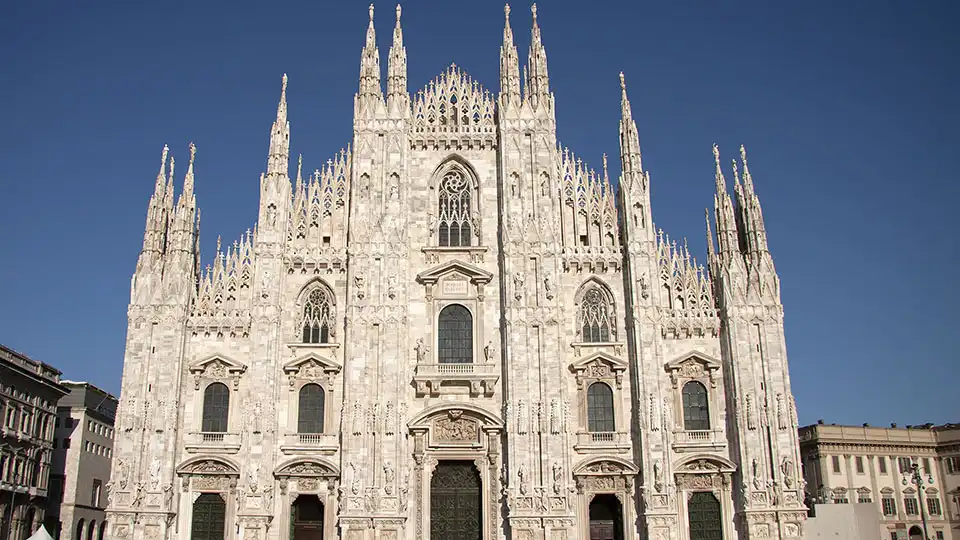
Duomo di Milano (Milan Cathedral), Milan, Italy
Introducing Milan – Where Fashion and Elegance Collide
Milan's sophisticated streets and haute couture boutiques offer a glimpse into the world of Italian style. Milan (or Milano), the vibrant and stylish capital of Italy's Lombardy region, is a city that seamlessly blends rich history with modern elegance. Known worldwide as a global fashion and design hub, Milan offers an array of cultural landmarks, exquisite cuisine, and a thriving cosmopolitan atmosphere. It attracts affluent travelers seeking a perfect blend of luxury, art, and sophistication. Somehow, when it happens in Milan, it is done more stylishly.
Milan captivates visitors with its unique blend of history, art, fashion, and commerce. As the capital of the Lombardy region and the second-most populous city in Italy, Milan has long been a powerhouse of culture and innovation. Where Rome is ancient and archaic, Milan is modern, slick and forward–looking, but without losing its past.
Milan's rich history dates back over two millennia. Founded by the Celts in the 4th century BC, it later became a prominent Roman settlement known as Mediolanum. Under Roman rule, Milan thrived as a center of trade and commerce, benefiting from its strategic location in the Po River Valley. Throughout the Middle Ages, Milan experienced the rule of various noble families, including the Visconti and Sforza dynasties, who left an indelible mark on the city's art, architecture, and governance.
The city's artistic legacy is evident in its numerous museums and cultural institutions. The Pinacoteca di Brera houses a remarkable collection of Italian Renaissance art, including masterpieces by Caravaggio, Raphael, and Titian. La Scala, one of the world's most prestigious opera houses, showcases the finest opera and ballet performances, attracting music enthusiasts from around the globe. Milan's architectural wonders include the iconic Duomo di Milano, a magnificent Gothic cathedral with intricate spires and stunning stained glass windows, and the Sforza Castle, a medieval fortress transformed into a hub of museums and galleries.
Milan's reputation as a global fashion capital is unparalleled. The city hosts Milan Fashion Week, where top designers unveil their latest creations on glamorous runways. The Quadrilatero della Moda, an area in the city center, boasts luxury boutiques and designer showrooms, making it a haven for fashion enthusiasts. Milan's fashion-forward reputation extends to its everyday street style, as locals effortlessly exude elegance and sophistication.
Beyond its cultural and artistic heritage, Milan is a thriving business and financial hub. It houses the Italian Stock Exchange and hosts international trade fairs, including the renowned Salone del Mobile, dedicated to furniture and interior design. The city's modern skyline, exemplified by the Porta Nuova district, showcases innovative architecture and a dynamic urban landscape.
Milan's gastronomy is a feast for the senses. Traditional Milanese cuisine delights with dishes such as risotto alla milanese, ossobuco, cassoeula and panettone, a Christmas cake enjoyed around the world. The city's culinary scene also offers a wide range of international flavors, reflecting its cosmopolitan character.
In terms of transportation, Milan boasts an efficient network of metros, trams, and buses, making it easy to navigate the city. The city's three airports, including Milan Malpensa Airport, provide connections to both domestic and international destinations.
Milan's allure lies in its ability to seamlessly blend its glorious past with a contemporary, forward-thinking spirit. Whether you're exploring its historical landmarks, indulging in high fashion, savoring culinary delights, or experiencing its buzzing business environment, Milan offers a vibrant and captivating experience for visitors and residents alike.
Some History
Milan has a captivating history that spans over two millennia, with its origins tracing back to ancient times. The city's strategic location in the Po River Valley made it a favorable settlement site and contributed to its development into a prominent center of power and culture.
The earliest recorded history of Milan dates back to the 4th century BC when it was founded by the Celts, known as the Insubres. The Insubres established a settlement called Mediolanum, which means "in the middle of the plain" in Latin, highlighting its central position within the Lombardy region. Mediolanum quickly flourished as a hub for trade and commerce due to its proximity to major trade routes.
In 222 BC, the Roman Republic conquered Mediolanum, bringing it under Roman rule. Under the Romans, Milan experienced significant growth and prosperity. It became an important center for the production of goods, including textiles and metalwork. The city's favorable location and well-developed infrastructure made it a thriving economic hub within the Roman Empire.
During the decline of the Western Roman Empire, Milan faced various challenges and witnessed a series of invasions and political upheavals. In the 5th century AD, the city fell under the control of the Ostrogoths and later the Lombards, a Germanic tribe from which the Lombardy region derives its name.
In the Middle Ages, Milan emerged as a powerful city-state governed by noble families, particularly the Visconti and the Sforza dynasties. The Visconti family, led by figures such as Matteo I Visconti and Gian Galeazzo Visconti, established a strong centralized rule and transformed Milan into a major political and cultural force in Italy. Under the Visconti and Sforza rule, Milan experienced a remarkable artistic and architectural renaissance. Artists and scholars flocked to the city, including the renowned painter and polymath Leonardo da Vinci, who spent a significant portion of his career in Milan. Leonardo's iconic mural, The Last Supper, can still be admired in the refectory of the Convent of Santa Maria delle Grazie in Milan.
In the 16th century, Milan came under Spanish rule as part of the Habsburg Empire. Spanish domination brought both prosperity and religious conflicts to the city. However, Milan's cultural and artistic legacy continued to thrive during this period, with the establishment of the Biblioteca Ambrosiana, a significant library and art gallery housing precious manuscripts and artworks.
In the 18th and 19th centuries, Milan became a center of Enlightenment ideas and played a pivotal role in the political and intellectual movements that led to the unification of Italy. Milan's involvement in the Italian Risorgimento (resurgence) resulted in the city becoming the capital of the Kingdom of Italy from 1865 to 1871.
During the 20th century, Milan experienced rapid industrialization and economic growth. It became an industrial powerhouse, particularly in the fields of manufacturing, fashion, and design. The city's reputation as a global fashion capital was solidified, thanks to the emergence of renowned fashion houses and the establishment of Milan Fashion Week, which attracts designers, models, and fashion enthusiasts from around the world.
Today, Milan stands as a vibrant and cosmopolitan city, blending its rich historical heritage with modern innovation. It continues to be a major center for finance, commerce, art, and culture, attracting visitors and residents alike with its iconic landmarks, museums, fashion boutiques, and gastronomic delights. Milan's historical journey has shaped its identity and positioned it as one of Italy's most influential and dynamic cities.
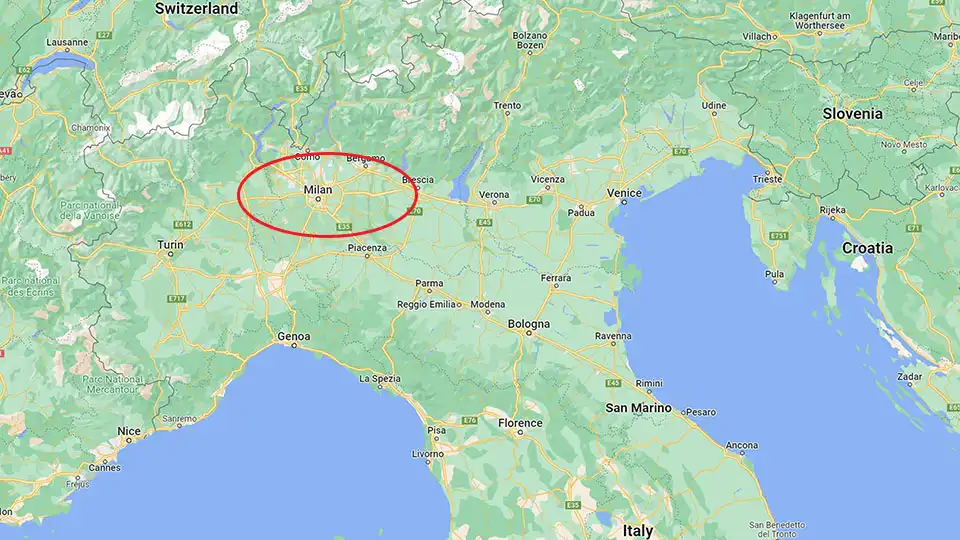
Milan, Italy
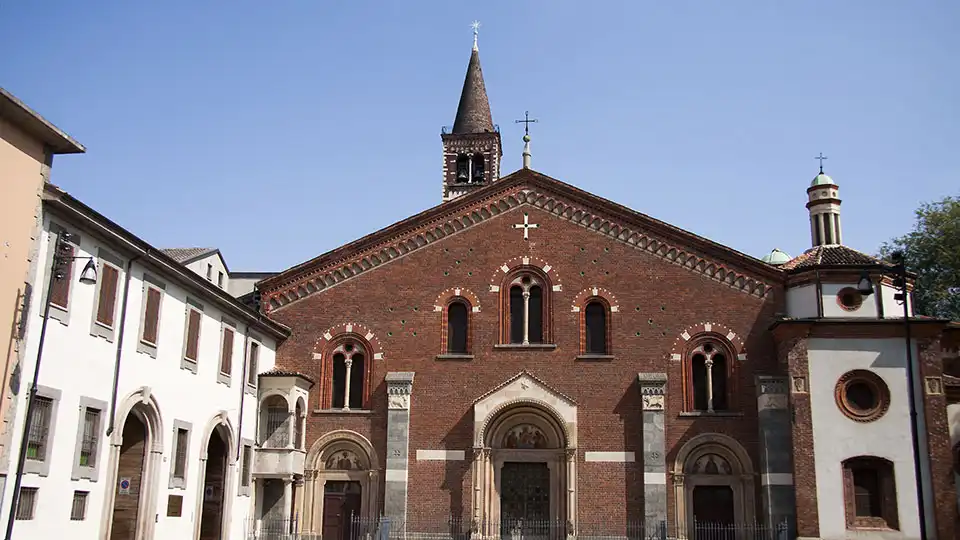
Basilica Sant Eustorgio
Things To Do in Milan
There's no shortage of things tp do in Milan and the surrounding region of Lombardy. With the history, culinary delights and fashion flair of the locals, the time will pass too quickly. Here's a list, in no particular order, of the top things to see and do.
- Duomo di Milano (Milan Cathedral): The Duomo is a magnificent Gothic cathedral and one of the largest churches in the world. Its intricate exterior is adorned with spires, statues, and beautiful details. Visitors can explore the grand interior, climb to the rooftop for panoramic views of the city, and admire the stunning stained glass windows.
- Galleria Vittorio Emanuele II: Located next to the Duomo, this elegant shopping arcade is known as one of the world's oldest and most beautiful shopping malls. The Galleria is lined with luxury boutiques, cafes, and restaurants. Its stunning glass dome and mosaic floors make it a must-visit spot for architecture and fashion enthusiasts.
- Pinacoteca di Brera: This renowned art gallery houses an impressive collection of Italian Renaissance art. It features works by prominent artists such as Caravaggio, Raphael, and Titian. The gallery is located in the historic Brera District and provides a delightful journey through the world of Italian art.
- La Scala: Milan's historic opera house, La Scala, is renowned for its exceptional acoustics and performances. It has hosted some of the world's most celebrated opera singers and musicians. Visitors can take a guided tour of the theater, explore its museum, or attend a performance if timing permits.
- Sforza Castle (Castello Sforzesco): This imposing fortress is a symbol of Milan's medieval history. The castle houses several museums and art collections, including the Museum of Ancient Art, the Museum of Musical Instruments, and the Egyptian Museum. Its beautiful courtyards and gardens offer a serene escape from the bustling city.
- Leonardo da Vinci's "The Last Supper" at Santa Maria delle Grazie: Located in the refectory of the Church of Santa Maria delle Grazie, this iconic mural by Leonardo da Vinci is a masterpiece of Renaissance art. It portrays the Last Supper of Jesus and his disciples. Due to its delicate condition, visitors are required to book timed entry tickets in advance.
- Quadrilatero della Moda (Fashion Quadrilateral): This upscale district is a haven for fashion enthusiasts. It comprises several streets, including Via Montenapoleone, Via della Spiga, and Via Sant'Andrea, where you'll find high-end fashion boutiques, luxury brands, and designer showrooms. It's the perfect place for luxury shopping and spotting the latest fashion trends.
- Navigli District: The Navigli area is characterized by its picturesque canals, which were once used for transportation and trade. Today, it's a vibrant district known for its lively nightlife, charming cafes, art galleries, and unique shops. Visitors can enjoy a leisurely stroll along the canals and soak up the bohemian atmosphere.
- Brera District: Brera is a historic and artistic neighborhood with narrow streets, cozy cafes, and art studios. It houses the Brera Art Gallery, as well as the Brera Botanical Garden and the Astronomical Observatory. The district has a charming ambiance, making it a delightful place to explore and experience the local culture.
- Sant'Ambrogio Basilica: This ancient church is dedicated to Milan's patron saint, Saint Ambrose. It features a mix of architectural styles and holds religious relics, including the tomb of Emperor Louis II. The basilica's serene atmosphere and historical significance make it an important site for religious and architectural exploration.
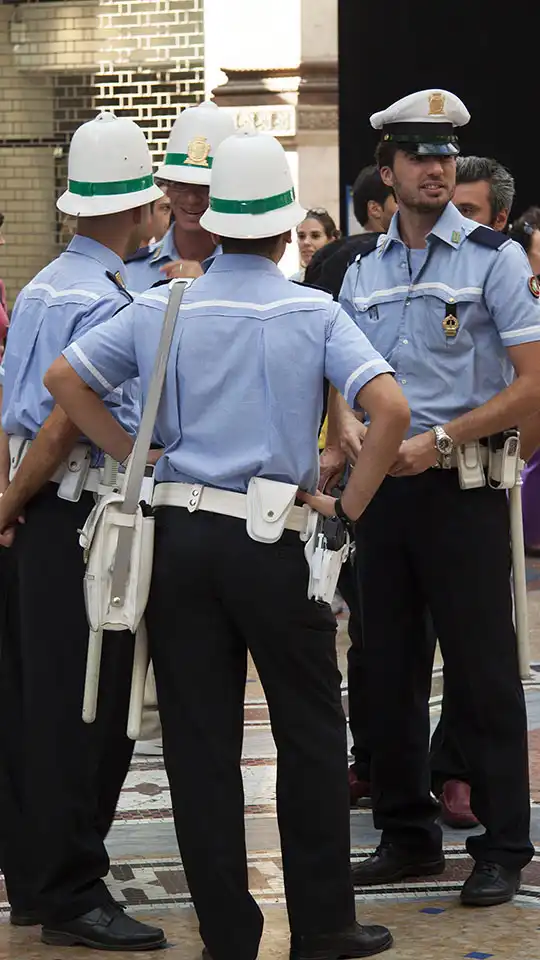
Policement in Milan. Somehow the Milanese do everything with more style
When to Go
It's worth noting that Milan hosts numerous events and fashion weeks throughout the year, which can impact hotel availability and prices. If you plan to attend specific events or are interested in the fashion scene, it's advisable to check the event calendar and plan your visit accordingly. Major annual events include:
- Milan Fashion Week: Held twice a year in February/March (Fall/Winter) and September/October (Spring/Summer), Milan Fashion Week is one of the most prestigious fashion events globally. It showcases the latest collections from renowned Italian and international designers.
- Milan Design Week (Salone del Mobile): This renowned design fair takes place in April and attracts designers, architects, and design enthusiasts from around the world. The event showcases cutting-edge furniture, lighting, and interior design concepts.
- La Notte Bianca: Also known as "The White Night," this annual event usually takes place in June. It features cultural and entertainment activities throughout the night, with museums, galleries, and shops staying open late.
- Carnevale Ambrosiano: Celebrated in February or March, Carnevale Ambrosiano is Milan's version of Carnival. Festivities include parades, masquerade balls, and street performances.
- Oh Bej! Oh Bej!: This traditional fair, held in December, celebrates the feast day of Saint Ambrose, the patron saint of Milan. The fair takes place near the Sforza Castle and features stalls selling sweets, crafts, and traditional goods.
- Milano Food Week: This culinary event showcases the diverse gastronomic scene of Milan and takes place in May. It features food tastings, workshops, cooking demonstrations, and special menus offered by participating restaurants.
- Milan Film Festival: Held in September/October, the Milan Film Festival showcases a selection of international and Italian films, including feature films, documentaries, and shorts.
- Notte dei Musei: Translated as "Night of the Museums," this event typically takes place in May. It offers free or discounted admission to various museums and cultural institutions in Milan, allowing visitors to explore the city's rich art and history late into the night.
Please note that the dates and specific details of these events may vary from year to year, so it's always a good idea to check the official event websites or local sources for the most up–to–date information before planning your visit.
Milan has four definite seasons, and the Milanese calendar is full all year round. Keeping the above–mentioned events in mind, here is some guidance for the different seasons
- Spring (April to June): Spring is generally considered one of the best times to visit Milan. The weather is mild, with temperatures ranging from pleasant to warm. The city is in bloom, and outdoor attractions, such as parks and gardens, are vibrant and picturesque. Additionally, this period sees fewer tourists compared to the summer months.
- Summer (July to August): Summer in Milan can be hot and humid, with temperatures often exceeding 30°C (86°F). While the city is bustling with energy and outdoor events, it is also the peak tourist season. If you don't mind the heat and crowds, summer offers a lively atmosphere, outdoor concerts, and opportunities to enjoy Milan's vibrant nightlife.
- Fall (September to November): Fall is another pleasant time to visit Milan, with mild temperatures and fewer tourists compared to summer. The city is known for its fashion and design weeks held in September, attracting visitors from around the world. Autumn foliage adds a beautiful touch to the city's parks and streets.
- Winter (December to February): Winter in Milan can be cold, damp, and occasionally snowy. While the temperatures drop, the city still offers a charm of its own. The holiday season brings festive decorations, Christmas markets, and ice skating rinks. Additionally, winter is an ideal time for museum visits and indoor activities.
Any time is a great time to visit Milan, as long as you are prepared for the season
The People of Milan
The people of Milan, known as Milanese, embody a unique blend of style, ambition, and cultural pride. As a fashion capital, Milanese individuals showcase an exceptional sense of style and take great care in their appearance. They effortlessly embrace the latest trends and use fashion as a form of self-expression.
Driven by the city's economic significance, the Milanese exhibit a strong work ethic and ambition. They are dedicated to their careers and strive for professional success. This industrious mindset has contributed to Milan's position as a thriving business hub, attracting ambitious individuals from around the world.
Social by nature, Milanese people enjoy the vibrant social scene the city offers. They relish in the opportunity to gather with friends and family, whether it's at the trendy bars, fashionable restaurants, or cultural events. The Milanese are known for their outgoing and sociable nature, making connections and building relationships with ease.
The Milanese possess a deep-rooted pride for their city and its rich cultural heritage. They appreciate the historical landmarks, architectural marvels, and artistic contributions that shape Milan's identity. Milanese individuals actively participate in local traditions and celebrations, proudly honoring their city's achievements.
Being a cosmopolitan city, Milan attracts a diverse population, fostering an open and accepting attitude among its residents. The Milanese embrace cultural diversity and value the enriching experiences that come from interactions with people from different backgrounds and walks of life.
Culinary delights hold a special place in Milanese culture, and food is a celebration of flavors and quality. Milanese cuisine, with its renowned dishes such as risotto alla milanese and panettone, reflects the city's gastronomic passion. Milanese individuals take pleasure in savoring traditional flavors and exploring the ever-evolving culinary scene.
Lastly, football (soccer) is deeply ingrained in the hearts of the Milanese. The rival football clubs, AC Milan and Inter Milan, evoke strong emotions and fervor among the locals. Football matches are not just sporting events but opportunities for the Milanese to come together, display their loyalty, and share in the passion for the game.
Places to Stay
Top–Rated Hotels
Milan has many fine, established hotels with impeccable standards of service. Prices match! You can book hotels through our booking widget. Below are some examples:
- Hotel Principe di Savoia: A luxurious five-star hotel known for its classic elegance and impeccable service. Located in the heart of Milan, it offers spacious rooms, a rooftop spa, and several fine dining options.
- Bulgari Hotel Milano: A stylish and sophisticated hotel situated in a renovated 18th-century building. It features contemporary design, a beautiful garden, a spa, and a Michelin-starred restaurant.
- Armani Hotel Milano: Reflecting the sleek and refined style of its namesake designer, this hotel offers luxurious accommodations, a spa, a rooftop lounge, and a gourmet restaurant. It is located in the prestigious Quadrilatero della Moda fashion district.
- Four Seasons Hotel Milano: Housed in a stunning 15th-century convent, this five-star hotel combines historical charm with modern luxury. It features elegant rooms, a spa, a lush courtyard garden, and an exceptional fine dining restaurant.
- Park Hyatt Milan: Situated in a historic building near the Galleria Vittorio Emanuele II, this hotel offers elegant rooms, a spa, a Michelin-starred restaurant, and a sophisticated bar. It is known for its refined atmosphere and attention to detail.
- Mandarin Oriental Milan: A luxurious hotel featuring contemporary design and a serene spa. Located in the heart of the city, it offers spacious rooms, a rooftop bar, and a Michelin-starred restaurant.
- The Westin Palace, Milan: This iconic hotel offers elegant rooms, a fitness center, and a rooftop terrace with panoramic views of the city. It is ideally located near the shopping district and major attractions.
- Excelsior Hotel Gallia, a Luxury Collection Hotel, Milan: A luxurious hotel known for its grandeur and style. It features opulent rooms, a rooftop spa, a gourmet restaurant, and stunning views of the city.
- ME Milan Il Duca: A trendy and modern hotel with stylish design and contemporary artwork. It offers sleek rooms, a rooftop bar, a restaurant, and a vibrant atmosphere.
- Palazzo Parigi Hotel & Grand Spa Milan: This five-star hotel combines classic elegance with modern amenities. It features luxurious rooms, a spa, a rooftop terrace, and a Michelin-starred restaurant.
Mid–Range Hotels
- Hotel Berna: Located near Milan Central Station, Hotel Berna offers comfortable rooms, a fitness center, and a complimentary breakfast. It provides convenient access to public transportation and is within walking distance of popular attractions.
- Ibis Milano Centro: Situated in the city center, Ibis Milano Centro offers modern and affordable accommodations. It features compact rooms, a bar, and a restaurant. The hotel is well-connected to public transport, making it easy to explore Milan.
- Hotel Galileo: Located near Porta Venezia, Hotel Galileo offers comfortable rooms with classic decor. It provides a cozy atmosphere, friendly staff, and a convenient location close to shops, restaurants, and public transportation.
- Best Western Plus Hotel Felice Casati: This hotel is situated in a historic building in the city center. It offers comfortable and stylish rooms, a bar, and a garden terrace. The hotel is within walking distance of major attractions and public transportation.
- Hotel Mediolanum: Just a short walk from Milan Central Station, Hotel Mediolanum provides modern rooms, a fitness center, and a complimentary breakfast. It offers a convenient location for exploring the city and has excellent transport links.
- Hotel Sanpi Milano: Situated near Porta Venezia, Hotel Sanpi Milano offers comfortable and stylish rooms, a bar, and a fitness center. It has a cozy atmosphere and is conveniently located near public transportation and popular attractions.
- Hotel Bristol: Located near the Central Station, Hotel Bristol offers comfortable rooms, a bar, and a rooftop terrace with panoramic views of the city. It provides easy access to public transportation and is within walking distance of shopping areas.
These medium-priced hotels in Milan offer a balance of comfort, affordability, and convenient locations, making them suitable options for travelers looking for value and a pleasant stay.
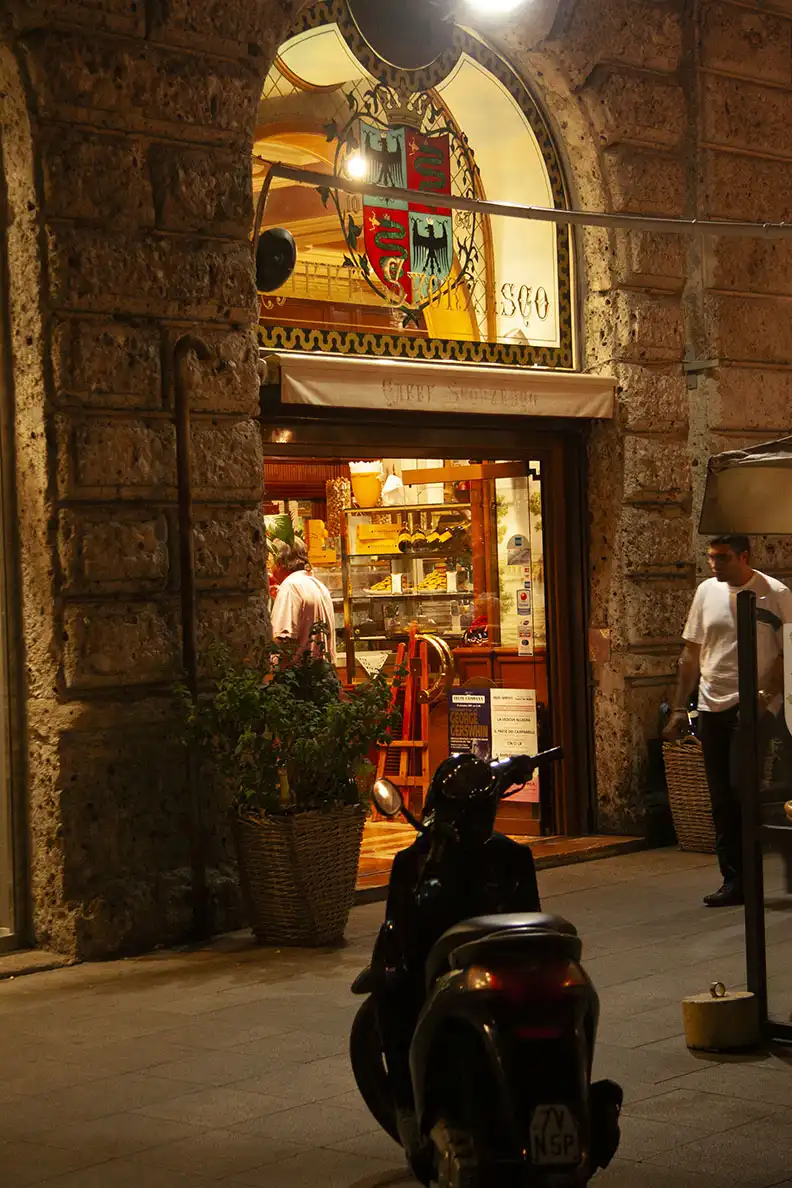
Night Cafe, Milan
Getting There and Getting Away
Milan is a transportation hub for the Lombardy region and all of northern Italy, with Malpensa Airport and numerous train connections from a variety of different train operators
Air Travel
Milan is served by three major airports that cater to both domestic and international flights. Here are the main airports for Milan:
- Malpensa Airport (MXP): Located approximately 45 kilometers northwest of Milan, Malpensa Airport is the largest and busiest airport in the Milan metropolitan area. It serves as a primary hub for international flights and offers connections to numerous destinations worldwide. Malpensa has two terminals, Terminal 1 and Terminal 2, and provides a range of amenities, including shopping, dining, and transportation options to the city center.
- Linate Airport (LIN): Situated just 7 kilometers east of Milan's city center, Linate Airport is the closest airport to the city. It primarily handles domestic and regional flights, as well as some international routes. Linate Airport offers convenient access to Milan's business district and central areas, making it a popular choice for travelers visiting the city for business or leisure purposes.
- Orio al Serio Airport (BGY): Also known as Milan Bergamo Airport, Orio al Serio is located approximately 45 kilometers northeast of Milan. Although it is not directly in Milan, it serves as a popular alternative airport for travelers seeking budget airlines and low-cost flights. Orio al Serio Airport mainly serves European destinations and is well-connected to Milan through various transportation options, including shuttle buses.
These airports provide convenient access to Milan and its surrounding areas. Each airport offers a range of services, facilities, and transportation links, ensuring a smooth travel experience for visitors arriving in Milan.
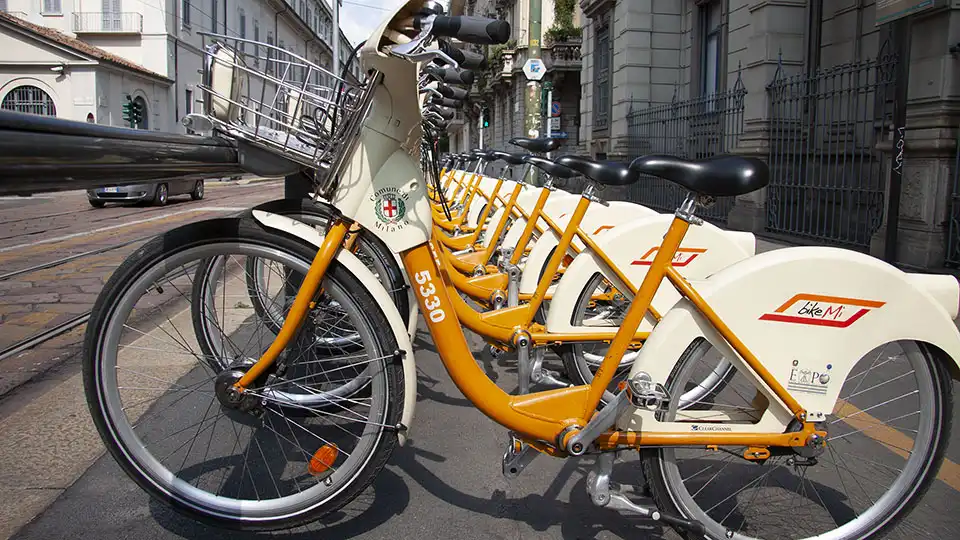
Bikes For Rent in Milan
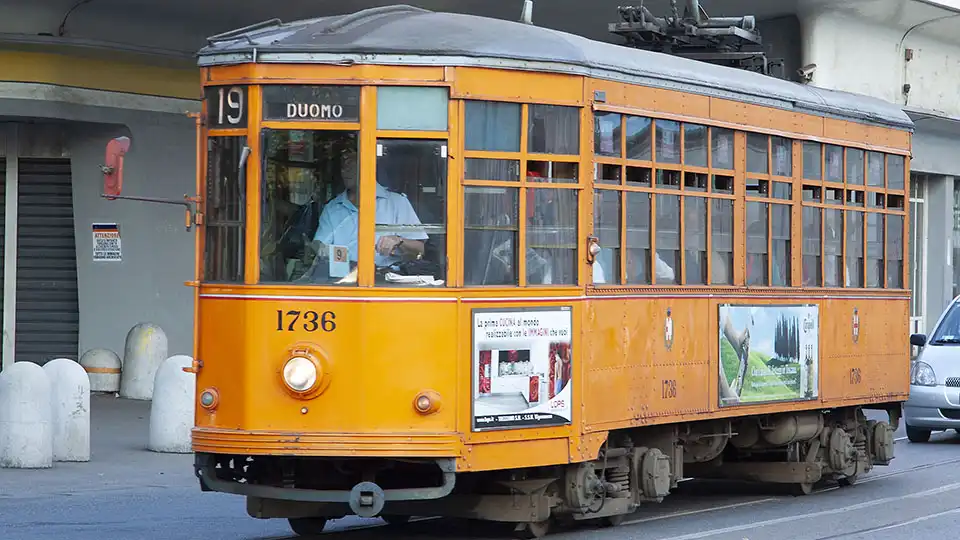
Milan Tram
Rail Travel
Milan is served by several major rail stations that connect the city with various domestic and international destinations. Here are the main rail stations in Milan:
- Milan Central Station (Stazione di Milano Centrale): As the primary railway station in Milan, Milan Central Station is one of the largest and busiest train stations in Europe. It serves as a major transportation hub, offering connections to both national and international destinations. Trains from Milan Central Station provide access to cities throughout Italy, including Rome, Florence, Venice, and Naples, as well as international destinations such as Zurich, Geneva, Munich, and Paris.
- Milan Porta Garibaldi Station (Stazione di Milano Porta Garibaldi): Located in the heart of the city, Porta Garibaldi Station is another significant railway hub in Milan. It primarily serves as a transportation hub for regional and high-speed trains. Porta Garibaldi Station offers connections to cities in Lombardy, including Como, Bergamo, and Brescia, as well as other Italian regions.
- Milan Cadorna Station (Stazione di Milano Cadorna): Situated near the city center, Cadorna Station is a major railway station that serves as an interchange for multiple transportation systems. It provides connections to the Malpensa Express train, which connects Milan with Malpensa Airport, as well as regional and suburban train services.
- Milan Lambrate Station (Stazione di Milano Lambrate): Lambrate Station is an important rail station in Milan, primarily serving regional and suburban train services. It offers connections to destinations within Lombardy and neighboring regions.
- Milan Rogoredo Station (Stazione di Milano Rogoredo): Rogoredo Station is a significant railway station located in the southeastern part of Milan. It mainly serves high-speed trains and regional services. The station provides connections to cities such as Bologna, Florence, and Rome.
Several rail operators operate in Italy, providing extensive train services across the country. Here are some of the major rail operators in Italy:
- Trenitalia: Trenitalia is the primary national rail operator in Italy, providing both regional and high-speed train services.
- Italo: Italo is a private high-speed rail operator offering modern and comfortable train services across major Italian cities.
- Frecciarossa: Frecciarossa is the high-speed train service operated by Trenitalia, connecting major cities in Italy.
- Frecciargento: Trenitalia's Frecciargento offers high-speed and intercity train services to various destinations in Italy.
- Frecciabianca: Operated by Trenitalia, Frecciabianca provides high-speed and intercity train connections across Italy.
- Intercity: Trenitalia's Intercity trains offer medium to long-distance services, connecting Italian cities.
- Regional Trains: Regional train services are operated by both Trenitalia and regional rail companies, linking smaller towns and cities within specific regions.
These rail operators form a comprehensive network that allows travelers to explore Italy's diverse regions and cities efficiently.
Practical Considerations
Emergency Contacts
In case of an emergency in Milan you can contact the following services:
- Police - Emergency number: 112
- Fire Department - Emergency number: 112
- Emergency Medical Services (SEM) - Phone: 112
It's a good idea to have these numbers saved in your phone or written down in case of an emergency. Additionally, if you're traveling to Milan as a tourist, you can also contact your embassy or consulate in Italy for assistance in case of an emergency.
Summary
Milan, the vibrant and stylish capital of Lombardy in northern Italy, offers a captivating blend of historical grandeur, modern architecture, world-class shopping, and cultural treasures. As a global center of fashion and design, Milan attracts visitors from around the world seeking to explore its rich heritage and experience its cosmopolitan atmosphere.
The city is renowned for its iconic landmarks, such as the magnificent Duomo di Milano, a stunning Gothic cathedral that dominates the city's skyline. Nearby, the Galleria Vittorio Emanuele II, an elegant 19th-century shopping arcade, invites exploration with its luxury boutiques, cafes, and stunning architecture.
Art enthusiasts will be captivated by Milan's art scene, with must-visit attractions including the Pinacoteca di Brera, housing a vast collection of Italian Renaissance art, and Leonardo da Vinci's masterpiece, "The Last Supper", preserved at the UNESCO-listed Santa Maria delle Grazie.
With its mix of historical treasures, world-class fashion, culinary delights, and vibrant energy, Milan offers a captivating experience for tourists seeking an unforgettable blend of culture, art, and style in the heart of Italy.
Copyright © 2025 travel-with-mark.com. All rights reserved. No part of this website or any of its contents may be reproduced, copied, modified or adapted, without the prior written consent of the owner, unless otherwise indicated for stand-alone materials. Unauthorized use is strictly prohibited. All trademarks, service marks, and trade names used in this website are the property of their respective owners and are used for identification purposes only. Your access to and use of this website is subject to our terms and conditions. Details of our privacy practices may be found in our privacy notices
